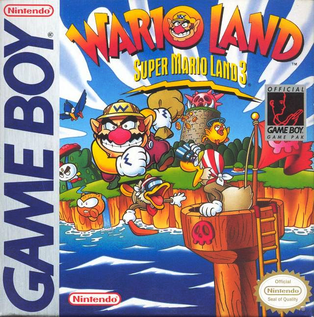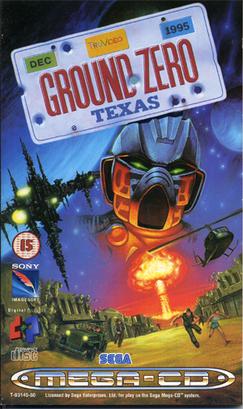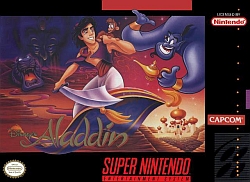
Super Mario World, known in Japanese marketing as Super Mario World: Super Mario Bros. 4, is a platform game developed by Nintendo EAD and published by Nintendo for the Super Nintendo Entertainment System (SNES). It was released in Japan in 1990, North America in 1991 and Europe and Australia in 1992. The player controls Mario on his quest to save Princess Peach and Dinosaur Land from the series' antagonist Bowser and the Koopalings. The gameplay is similar to that of earlier Super Mario games; players control Mario through a series of levels in which the goal is to reach the goalpost at the end.

Tetris Attack, also known as Panel de Pon in Japan, is a puzzle video game developed by Intelligent Systems and published by Nintendo for the Super Nintendo Entertainment System. A Game Boy version was released a year later. In the game, the player must arrange matching colored blocks in vertical or horizontal rows to clear them. The blocks steadily rise towards the top of the playfield, with new blocks being added at the bottom. Several gameplay modes are present, including a time attack and multiplayer mode.

Wario Land: Super Mario Land 3 is a 1994 platform game developed and published by Nintendo for the Game Boy. It is part of the Wario series and a sequel to 1992's Super Mario Land 2: 6 Golden Coins. The story follows Wario travelling to a distant island to steal and sell a valuable statue to purchase his own castle out of envy for Mario's. The player traverses themed zones consisting of levels, each of which scattered with collectible coins which can be used to purchase items that aid the player in progressing through stages.

Tetris Worlds is a version of the video game Tetris. Originally released in 2001 for Microsoft Windows and Game Boy Advance, it was later released for Xbox, GameCube, and PlayStation 2 in 2002. In 2003, an Xbox Live version titled "Tetris Worlds Online" and a single-disc compilation version were released for the Xbox. The latter was bundled with Xbox systems.
1994 saw many sequels and prequels in video games, such as Super Metroid, Donkey Kong Country, Final Fantasy VI, Sonic 3 & Knuckles, Super Street Fighter II Turbo and Virtua Fighter 2 and Doom II, along with new titles such as Daytona USA, Ace Driver, Alpine Racer and Tekken.
1992 saw many sequels and prequels in video games, such as Dragon Quest V, Final Fantasy V, Sonic the Hedgehog 2, Street Fighter II: Champion Edition, Super Mario Land 2: 6 Golden Coins, and Super Mario Kart, along with new titles such as Art of Fighting, Lethal Enforcers, Mortal Kombat and Virtua Racing.
1991 saw many sequels and prequels in video games, such as Street Fighter II, Final Fantasy IV, Super Castlevania IV, Mega Man 4, Super Ghouls 'n Ghosts, and The Legend of Zelda: A Link to the Past, along with new titles such as Sonic the Hedgehog, Battletoads, Lemmings, Sunset Riders, Duke Nukem, Fatal Fury: King of Fighters, and Streets of Rage. The year's highest-grossing video game worldwide was Capcom's arcade fighting game Street Fighter II. The year's best-selling system was the Game Boy for the second year in a row, while the year's best-selling home video game was Sega's Sonic the Hedgehog, which was also the year's top video game rental in the United States.
1990 saw many sequels and prequels in video games, such as Metal Gear 2: Solid Snake, Dr. Mario, Dragon Quest IV, Final Fantasy III, Phantasy Star II, and Super Mario World, along with new titles such as Fire Emblem: Shadow Dragon and the Blade of Light and Magic Sword. The year's highest-grossing arcade video games were Final Fight in Japan and Teenage Mutant Ninja Turtles in the United States. The year's best‑selling system was the Game Boy, while the year's best-selling home video game was Super Mario Bros. 3 for the Nintendo Entertainment System.
1989 saw many sequels and prequels in video games, such as Phantasy Star II, Super Mario Land, Super Monaco GP, along with new titles such as Big Run, Bonk's Adventure, Final Fight, Golden Axe, Strider, Hard Drivin' and Teenage Mutant Ninja Turtles. The year also saw the release of the Sega Genesis and TurboGrafx-16 in North America, and the Game Boy worldwide along with Tetris and Super Mario Land.
1988 saw many sequels and prequels in video games, such as Dragon Quest III, Super Contra, Super Mario Bros. 2, Mega Man 2, Double Dragon II: The Revenge, and Super Mario Bros. 3, along with new titles such as Assault, Altered Beast, Capcom Bowling, Ninja Gaiden, RoboCop, Winning Run and Chase H.Q.
1987 saw many sequels and prequels in video games, such as Castlevania II: Simon's Quest, Dragon Quest II, Final Lap, and Zelda II, along with new titles such as After Burner, Contra, Double Dragon, Final Fantasy, Mega Man, Metal Gear, Operation Wolf, Phantasy Star, Shinobi, Street Fighter and The Last Ninja. The Legend of Zelda was also introduced outside of Japan.

Donkey Kong is a 1994 puzzle-platform game developed by Nintendo and Pax Softnica and published by Nintendo for the Game Boy. Donkey Kong is loosely based on the 1981 arcade game of the same name and its sequel Donkey Kong Jr.

Ground Zero: Texas is a full motion video game, released for the Sega CD in November 1993. The game relies heavily on video footage, with which the player interacts. It contains 110 minutes of interactive footage from four different cameras. It was directed by Dwight H. Little, who is also known for the films Marked for Death and Halloween 4: The Return of Michael Myers.

Tetris is a puzzle video game developed and published by Nintendo for the Game Boy in 1989. It is a portable version of Alexey Pajitnov's original Tetris and it was bundled with the North American and European releases of the Game Boy itself. It is the first game to have been compatible with the Game Link Cable, a pack-in accessory that allows two Game Boy consoles to link for multiplayer purposes. A remaster, Tetris DX, was released on the Game Boy Color in 1998. A Nintendo 3DS Virtual Console version of Tetris was released in December 2011, lacking multiplayer functionality. The game was released on the Nintendo Switch Online service in February 2023.

Magical Tetris Challenge is a puzzle game by Capcom for the Nintendo 64, Game Boy Color, and PlayStation. It is a version of Tetris featuring Disney characters. It is one of the few Nintendo 64 games to be entirely in 2D, in addition to being Capcom's first game for the console.

Tetris Party is a puzzle video game by Hudson Soft for WiiWare. An installment of the Tetris series, the game supports the use of Miis and the Wii Balance Board, and features both local and online multiplayer in addition to several single-player modes unique to the game.

Mortal Kombat is a 1992 fighting game developed and published by Midway. It is the first entry in the Mortal Kombat series and was subsequently released by Acclaim Entertainment for nearly every home platform at that time. The game focuses on several characters of various intentions who enter a martial arts tournament with worldly consequences. It introduced many key aspects of the Mortal Kombat series, including the unique five-button control scheme and gory finishing moves called Fatalities.

Puyo Puyo Tetris is a 2014 puzzle video game developed by Sonic Team and published by Sega. The game is a crossover between the Puyo Puyo series and the Tetris franchise, and features various gameplay modes incorporating both aspects. The game includes characters modeled and named after the seven Tetrominos, which are different puzzle pieces each made of four blocks.

Disney's Aladdin is a 1993 platform game developed and published by Capcom for the Super Nintendo Entertainment System, based on the 1992 animated Disney film of the same name. Disney's Aladdin is a 2D side-scrolling video game in which the player controls Aladdin and his monkey Abu. It was designed by Shinji Mikami.











